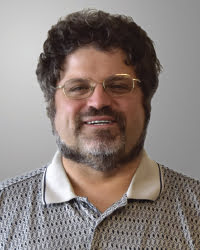Ophthalmologists have known for more than a decade that thinning of retinal tissue has been associated with the onset of Alzheimer’s disease and its devastating destruction of brain cells that occurs well before memory loss or other impairments set in. Now optical technologies are allowing clinicians to witness these dramatic changes before their eyes and behind those of their patients.
 As I write about in our cover story for this edition — “Optics Peers Through the Haze of Dementia” — researchers in academic settings such as Duke University, and in a continental initiative in Europe called the MOON project, are cataloguing retinal images with the aid of OCT, OCTA, Raman spectroscopy, and ultrawide-field photos. At the same time, a team at MIT is testing light therapy as a means to destroy the telltale amyloid plaques of Alzheimer’s.
As I write about in our cover story for this edition — “Optics Peers Through the Haze of Dementia” — researchers in academic settings such as Duke University, and in a continental initiative in Europe called the MOON project, are cataloguing retinal images with the aid of OCT, OCTA, Raman spectroscopy, and ultrawide-field photos. At the same time, a team at MIT is testing light therapy as a means to destroy the telltale amyloid plaques of Alzheimer’s.
When Neuroscience 2019 kicks off in Chicago this month in the midst of the 50th
anniversary of the founding of the Society for Neuroscience, the MIT team, led by Li-Huei Tsai, will be on hand to present what they have learned through their research. Many of the presentations will reflect an increased understanding of the brain’s capabilities (or limitations, when damaged) — knowledge gained from the light cast by various optical methods.
Also featured in this issue:
• In this month’s “Biopinion”, Sead Doric of Doric Lenses Inc. writes about a related topic: the rise of what has become known as “neurophotonics,” or the use of optical technologies in the study of the brain. Doric argues that government support is needed not only for research but also for hardware development.
• Hamid Pahlevaninezhad of Harvard Medical School illuminates the development of nano-optic endoscopes to aid in diagnosis. The endoscopes use metalenses to improve depth of range and resolution in the microtechnology at the tips of catheters. Read more.
• Disease detection is also a focus of an article by Mark Little of PhotoSound Technologies Inc., who writes that small animal imaging provides a vital link to understanding the nature of various conditions. Little’s feature can be found here.
• Finally, contributing editor Farooq Ahmed writes that the photoacoustic technology that began with the invention of the photophone by Alexander Graham Bell and Charles Sumner Tainter in the 19th century has evolved into a range of techniques to produce increased resolution of the blood vessels and bodily tissue, using both light and sound. This trend has led to the development of the Cytophone by a team led by Vladimir Zharov at the University of Arkansas. Read about it here.
Enjoy the issue!
